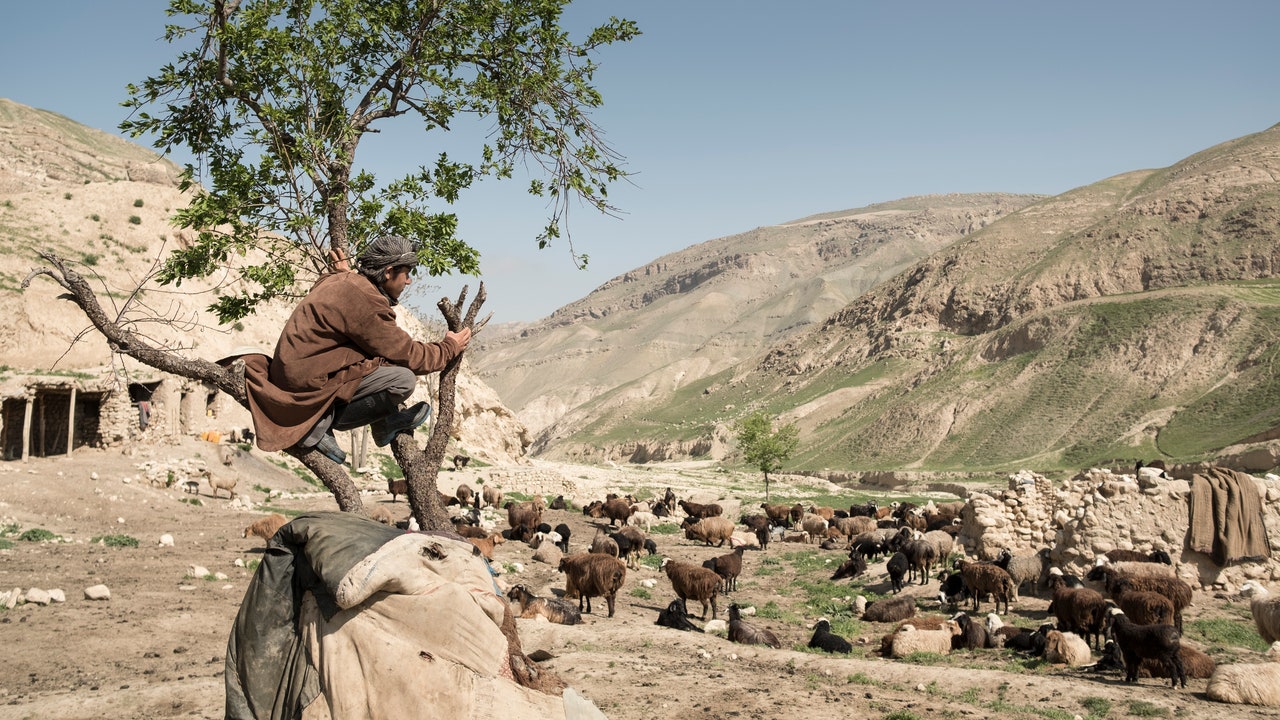“Cashmere is a really important raw material for the luxury fashion industry,” Pam Batty, secretary to the Burberry Foundation and VP of corporate responsibility at Burberry, tells Vogue. “We chose Afghanistan [for the program] because it’s the world’s third largest producer of cashmere after China and Mongolia. We were also very aware of the social and economic challenges [faced by] the people of Afghanistan—it’s suffered from years of conflict and has been impacted significantly by climate change.”
What does Burberry’s cashmere initiative involve?
Despite 90% of goats in Afghanistan producing cashmere, the vast majority of herders are simply not aware of its value as a luxury raw material. “They’re sitting on a goldmine, if the right techniques are employed,” says Agnė Baltaduonytė, advocacy manager at Oxfam in Afghanistan, which is partnering with Burberry on the initiative. “It starts with knowledge: ‘This is how you clean it’, ‘This is how you process it’.”
Helping goat herders to form collectives allows them to get higher prices for their cashmere. Previously, individual herders would have to sell to middlemen rather than the big traders—meaning they’d be paid significantly less. In less than three years, the initiative has helped raise the price of cashmere in Afghanistan from $17 per kg in 2017 to as high as $31 per kg in 2019. “Now herders have access to one-stop shops inside their communities, where they can collect their cashmere [together] and sell a larger amount for a much higher price,” says Mohammad Ali Roshan, cashmere program manager at Oxfam in Afghanistan.
Empowering women, who play a crucial role in these herding communities, is another key aspect of Burberry’s cashmere initiative. “Women are often the ones working with livestock, doing the de-hairing [separating fine cashmere from the coarser hairs],” Baltaduonytė says, adding that 28% of the herders supported through the initiative so far are women. “We’ve been trying to promote women in leadership positions, and having female coordinators at the stop shops.”
How will the initiative help to protect the environment?
Ensuring that herders in Afghanistan have financial security is important from an environmental perspective, too. “We are seeing overstocking of pastures, but it’s not cashmere that’s producing that situation—there are a lot of different livestocks that Afghan producers have,” explains Andrew Nobrega, global programs director at PUR Projet, a bespoke project development company working on the initiative. “If we want to see a reduction of overstocking, we need to improve the livelihoods of the producers so they have the flexibility to help manage those ecosystems in a better way.”
